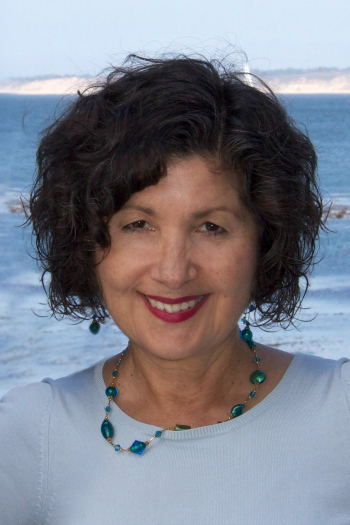Peggy Estrada, an associate research scientist in Latin American and Latino studies at UC Santa Cruz, has been awarded a three-year $999,999 grant to study how to best help school-age English learners achieve English language proficiency and academic excellence.
Estrada said 43 percent of California K-12 students have a primary language at home other than English. Students who do not score English proficient on a state test when they enter school are classified as English learners. Nationwide, they are the fastest growing proportion of public school enrollment.
“English learners are those who do not pass, and they are entitled to language and support services,” Estrada said. To be reclassified as fluent English proficient in California, students must pass the state proficiency test along with additional content achievement criteria.
The grant is a Lyle Spencer Research Award from the Spencer Foundation called “English Learner Achievement in Elementary School: Classroom Composition and Opportunity to Learn.” With it, Estrada and colleagues Timea Farkas, an assistant research scientist in Latin American and Latino studies, and Claude Goldenberg, professor of education at Stanford University, plan to conduct a small-scale experiment involving 16 schools in a large California school district, one of the biggest in the country with a large population of English learning students.
They will investigate classroom composition for English learners, particularly English learner separation or integration with other students and how that affects their opportunity to learn. “Different districts have different policies,” Estrada said. “Some separate English learners, others mix them with other students.”
Estrada said one way school districts attempt to improve instruction for English learners is through classroom composition policies that prescribe the mix by language status (English learners; English learners reclassified as fluent; initially fluent English proficient; and English only) and also by the number of English proficiency levels—beginning through advanced.
Little research has been done on whether mixing or separating English learners is more likely to promote English proficiency and achievement. Is it better to include English-only students with English learners? What about including students who started out as English learners and are now proficient? Also, how do classroom practices such as English language arts instruction differ depending on the composition of students? How do students perform under these different conditions?
Estrada and her colleagues plan to investigate using a class-composition experiment, classroom observations of English language arts instruction, and teacher and school administrator surveys and interviews.
“We’re examining three questions,” she said. “First, do English language arts classroom practices differ depending on the classroom composition, and if so, how? Second, do classroom practices and classroom composition each predict student achievement? And finally, “if we find a relation between classroom composition and student achievement, is that accounted for by classroom practices?”
Estrada said school districts in California have a lot of leeway regarding how they tackle the education of English learners and “research on this topic is extremely scarce.” She is hoping that the results of her research “will inform our understanding about how classroom composition affects classroom practices, students’ opportunity to learn, and achievement.” Additionally, she hopes the results will point to policies with high potential to promote both better instruction and achievement.
The Spencer Foundation was established in 1962 by Lyle M. Spencer and focused on education. It received its major endowment after Spencer's death in 1968 and began formal grant making in 1971. The Lyle Spencer Research Awards program was introduced in 2014 as the successor to the foundation's major research grants program.



